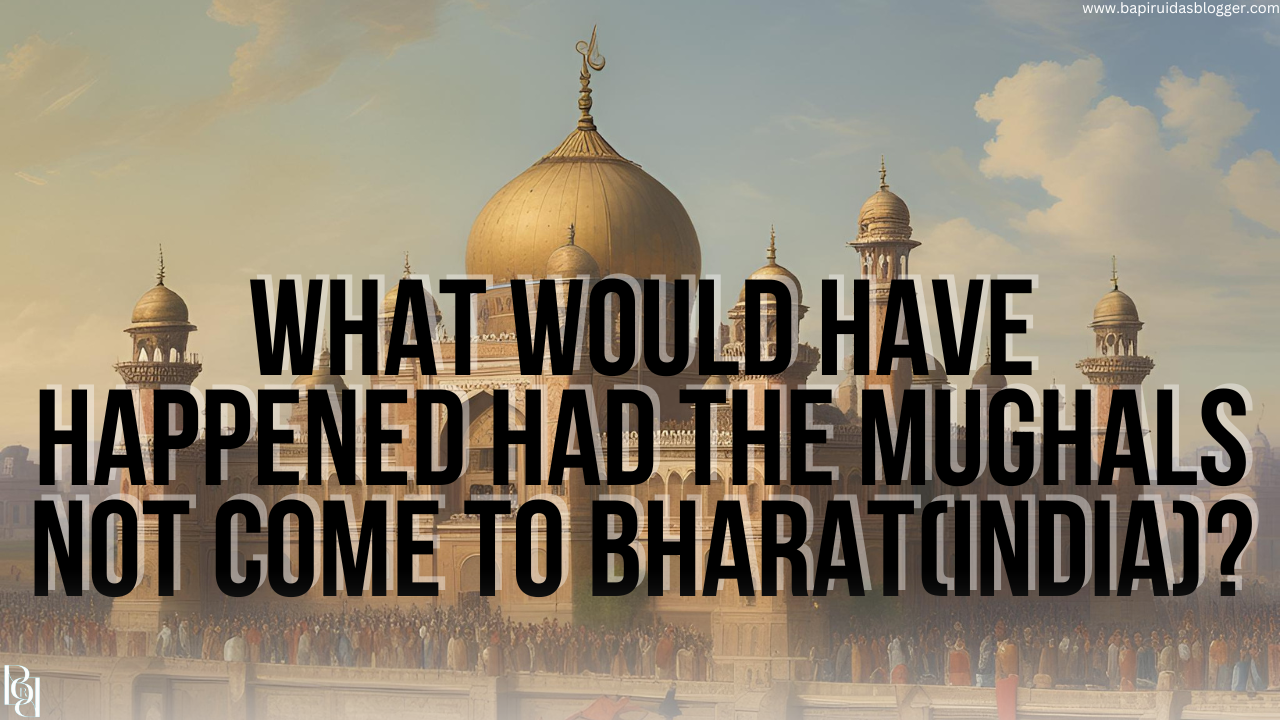What happened if the Mughals had not come to Bharat(India)?
In this article, we read What happened if the Mughals had not come to Bharat(India)?
History Arrivals in India
The rise of the Mughals in India has been an important historical period that had a lasting impact on the country’s politics, culture, and society. The establishment of the Mughal Empire by Babur in 1526 brought about significant changes. However, let’s consider a hypothetical scenario where the Mughals never came to India. This allows us to consider an alternate historical narrative and consider what could have happened.

Historical Context
India before the Mughals
Before the Mughal era, India had many regional states and empires, each with its own distinctive cultural norms and governance structures. The Delhi Sultanate dominated much of northern India, while the southern regions were under the control of the Vijayanagara Empire and several Deccan sultanates.
The State of India Before Mughal Rule
At the beginning of the 16th century, India was a land of diverse cultures, languages, and religious beliefs. The Delhi Sultanate struggled to maintain its authority due to internal conflicts and invasions from outside forces. This era was marked by political inequality and constant power struggles between regional powers.
Prominent Dynasties and Kingdoms
Notable dynasties included the Rajputs in Rajasthan, the Bahmani Sultanate in the Deccan region, and the Vijayanagara Empire in the south. These kingdoms had rich cultural heritage and efficient administrative systems, which would have laid the ground for further advancement had there been no Mughal interference.
Political Landscape
Impact on Regional Kingdoms
In a world where the Mughal conquest never occurred, regional kingdoms would have continued to exert their influence independently. The valorous Rajputs might have expanded their dominion, potentially unifying northern India under a unified Rajput confederacy.
Potential Political Collaborations
Given the fragmented political milieu, forging strategic alliances would have been imperative for survival. The Rajputs, Marathas, and other regional entities could have come together to counter external threats and possibly create a more united Indian subcontinent.
Roles Played by Rajputs & Marathas
The martial traditions of Rajputs and Marathas would have played crucial roles in shaping Indian history sans Mughal rule. Leaders like Shivaji from Maratha territories might have emerged as dominant figures challenging established norms and reshaping the political landscape.
Cultural Influence
Art & Architecture Minus Mughal Influence
Without patronage from the Mughals, Indian artistry & architecture would have followed vastly different trajectories. Regional styles like Rajputana & Dravidian architecture would have flourished independently resulting in unique structures.
Legacy of Literature & Music Sans Mughals
Literary & musical realms would have undergone distinctive evolutions absent Persian influences engendered by Mughal rule. Greater emphasis on regional languages & native literary forms might have been observed instead.
Transitions in Clothing & Cuisine
Clothing styles & culinary preferences with deeper roots in indigenous traditions without pronounced Mughal influence will differ markedly. Traditional garments like dhotis & sarees along with cuisines emphasizing local ingredients will retain prominence.
Economic Ramifications
Trade Scenarios Without Specific Mughal Policies
Trade & commerce, pivotal elements for economic sustenance in India’s ecosystem could witness disparate growth trajectories without direct influence from Central Asian trade routes but under local networks fostering indigenous growth.
Potential impact on agricultural practices
Agricultural practices – the backbone of livelihoods – may remain deeply embedded within traditional patterns prevalent in the regions, unaffected by the progressive concepts introduced by the Mughals, instead adopting revolutionary irrigation methods introduced earlier.
Urban construction free from external influences
Urban planning constraints are free from interventions resulting from extemporaneous construction, perhaps aware of domestically inspired trends aimed at improving infrastructure in growing cities, which boast domestic architectural adaptations centered around livability needs.






